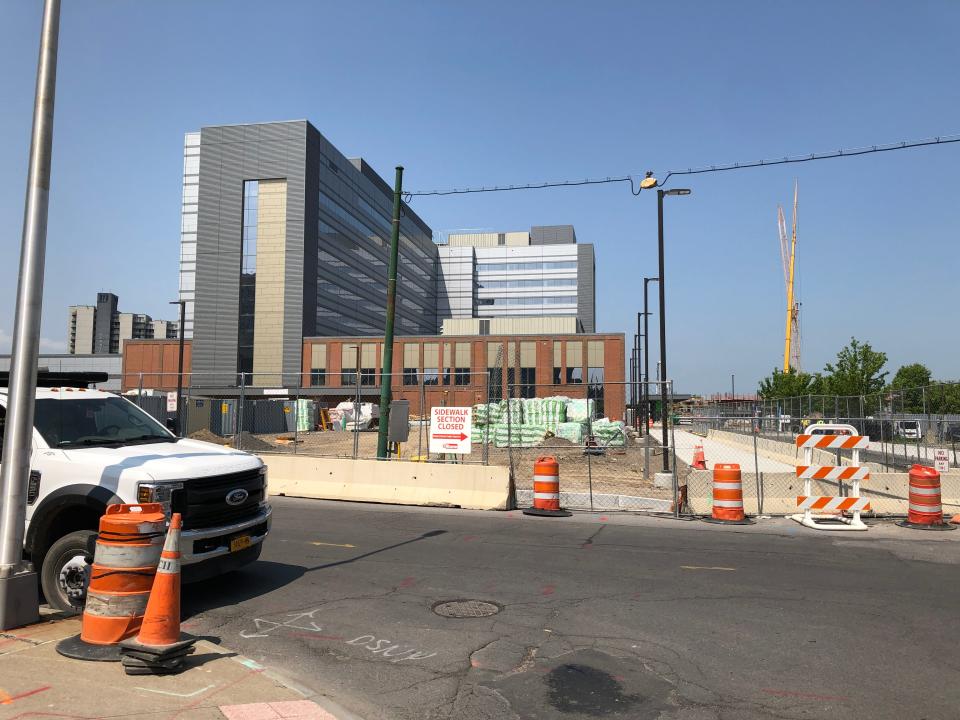Good, but maybe not good enough, news for struggling local hospitals
A change in a formula that determines Medicare payments to financially strapped upstate hospitals will bring in $967 million more a year starting Oct. 1.
That includes an extra $41.6 million for the Mohawk Valley Health System, which will open its new Wynn Hospital in late October; $5 million for Rome Health; $5.3 million for Oneida Health; and $20.4 million for Bassett Medical Center in Cooperstown.
As critical access hospitals, Little Falls Hospital and Community Memorial Hospital in Hamilton are paid through a different formula.

The COVID-19 pandemic and its aftermath led to a few difficult financial years for hospitals, largely because of much higher labor costs as hospitals competed for scarce workers, Mohawk Valley Health System President/CEO Darlene Stromstad said. The local Medicare formula change represents about a 5.5 percent increase to the health system’s $700 million annual budget, she said.
“This adjustment, along with other belt-tightening measures and the increased efficiency of functioning out of one hospital will significantly reduce our operating loss,” she said, “and gives us the opportunity next year to break even. We are very optimistic about our future.”
Other area hospital leaders also expressed their gratitude for the larger payments, but cautioned that they won’t fix all of hospitals’ financial problems.
“The money is going to help, it really is,” said Gary Fitzgerald, president and CEO of the Iroquois Healthcare Alliance. “But it won’t solve everything.”
Until now, Medicare has paid hospitals about 65 cents for every dollar they spend caring for Medicare patients (which is still better than the 60 cents Medicaid pays), Fitzgerald said.
This rate increase will raise that amount, but Medicare payments still won’t fully cover the cost of care, he said.
Strain in upstate hospitals: Hospitals in upstate NY ravaged by bed, staff shortages: 'It is not right for patients'
And labor costs have risen 20% since the pandemic, including an increased reliance on more-expensive clinical workers from staff agencies, Fitzgerald said.
Between shortages of both staff and money, some hospitals have been forced to cut services, he said. “Hopefully,” Fitzgerald added, “this increase can stop that.”
What specifically has changed?
Medicare hospital payments include money for labor costs, an amount determined by the Medicare Wage Index. Every metro area is assigned a rate that's a percentage of the national average for health care costs, with some higher and some lower than the average. But upstate New York has historically received a lower percentage than what labor actually costs locally, Sen. Charles Schumer said.
He announced last week that the Centers for Medicare and Medicaid Services had finalized new, higher rates for Upstate hospitals after years of advocacy by Schumer, other area officials and area hospitals.
Schumer’s reaction
“This is one of the biggest shots in the arm for federal funding Upstate New York hospitals have seen in decades,” he said. “This will be a monumental boost to healthcare for our families and to help our healthcare providers fix budget shortfalls, address doctor and nurse shortages and so much more.”
Rome Health reaction
The hospital is grateful for the increase in reimbursements, Chief Financial Officer Dewey Rowlands said.
“This is the most significant increase in Medicare funding for Upstate hospitals, but on its own, won’t provide the margin hospitals need to reinvest in people, technology and services,” he said. “The additional Medicare funding is much needed and will have a positive impact; however, hospitals will continue to face financial challenges because reimbursements from commercial and government payors have not kept pace with the increasing costs for labor and supplies.”
Bassett Healthcare Network reaction
Dr. Tommy Ibrahim, Bassett’s president and CEO, called the increase “crucial legislative development” and noted that more than 77 percent of admitted hospital patients in the Bassett system and 64 percent of outpatient services are covered by either Medicare or Medicaid.
The higher reimbursements will “enhance our hospitals’ resources and ultimately benefit our communities who depend on us for care.”
This article originally appeared on Observer-Dispatch: Medicare to pay more to financially struggling area hospitals

